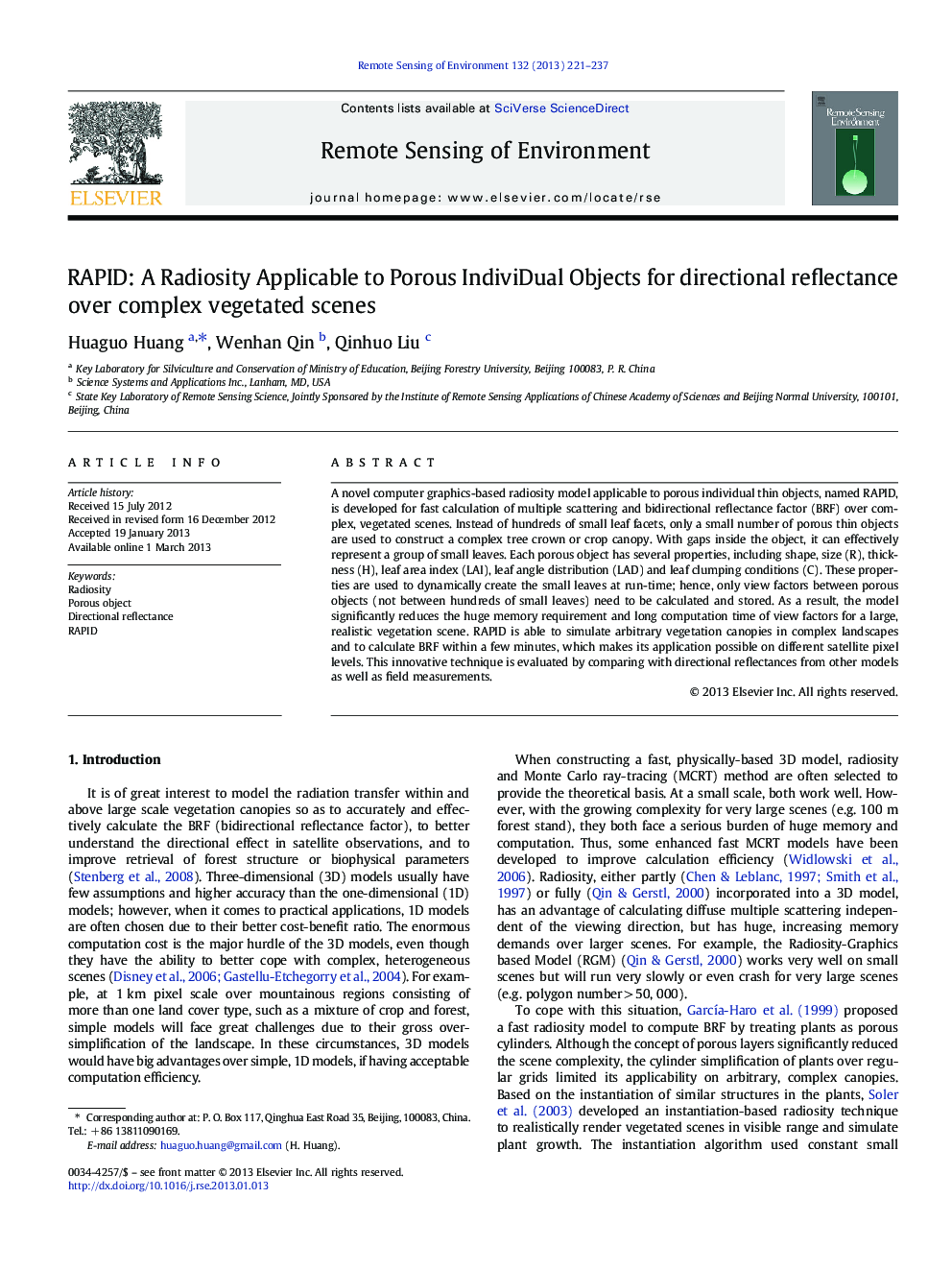| Article ID | Journal | Published Year | Pages | File Type |
|---|---|---|---|---|
| 4458925 | Remote Sensing of Environment | 2013 | 17 Pages |
A novel computer graphics-based radiosity model applicable to porous individual thin objects, named RAPID, is developed for fast calculation of multiple scattering and bidirectional reflectance factor (BRF) over complex, vegetated scenes. Instead of hundreds of small leaf facets, only a small number of porous thin objects are used to construct a complex tree crown or crop canopy. With gaps inside the object, it can effectively represent a group of small leaves. Each porous object has several properties, including shape, size (R), thickness (H), leaf area index (LAI), leaf angle distribution (LAD) and leaf clumping conditions (C). These properties are used to dynamically create the small leaves at run-time; hence, only view factors between porous objects (not between hundreds of small leaves) need to be calculated and stored. As a result, the model significantly reduces the huge memory requirement and long computation time of view factors for a large, realistic vegetation scene. RAPID is able to simulate arbitrary vegetation canopies in complex landscapes and to calculate BRF within a few minutes, which makes its application possible on different satellite pixel levels. This innovative technique is evaluated by comparing with directional reflectances from other models as well as field measurements.
► We develop and validate a radiosity model RAPID using porous individual objects. ► A new conifer shoot model is created for large vegetation scenes. ► RAPID simulates arbitrary vegetation canopies within a few minutes. ► Possible to be applied on different satellite pixel levels.
